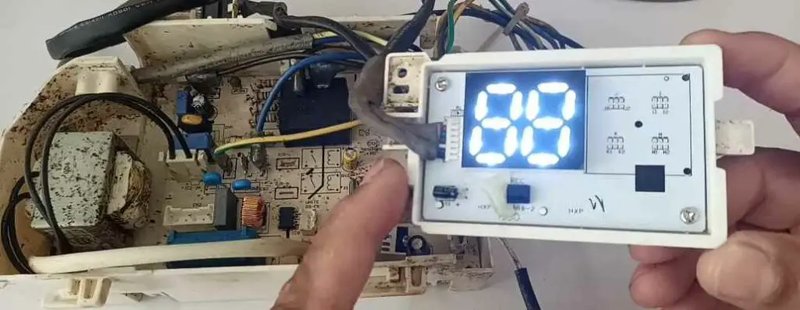
When your air conditioner flashes an error code, it’s like a car’s check engine light — it’s telling you something’s wrong. The “OE” code on GE air conditioners typically signals an issue with the water drainage. Essentially, this error means that your unit is struggling to drain water properly. Water that’s not draining can impact performance and might even damage the unit over time. But fret not; understanding what causes this error and learning simple preventive measures can save you a ton of hassle and ensure your AC runs smoothly.
Understanding the OE Error Code
Before diving into prevention, it’s essential to understand what an “OE” error code is trying to communicate. Think of it as your air conditioner trying to talk to you. When it displays “OE,” it’s basically saying, “Hey, something’s off with my drainage system.”
Air conditioners draw in warm air, cool it down, and along this process, moisture from the air condenses into water. This water needs somewhere to go, and that’s where your unit’s drainage system comes into play. Typically, this water is either evaporated or drained outside the unit. However, if there’s a blockage or malfunction in the drainage system, this process gets interrupted, and voilà — you see the “OE” code.
If not addressed, the accumulated water can lead to other issues, like mold growth or damage to internal components of your air conditioner. Imagine a clogged sink; if the water has nowhere to go, it just kind of sits there, causing a mess. Similarly, water in your AC with nowhere to drain can wreak havoc. So, recognizing and addressing this issue promptly is key to maintaining your unit’s health.
Common Causes of the OE Error Code
Now that you know what the “OE” code means let’s talk about what might cause this pesky problem. One of the most common culprits is a blocked or kinked drainage hose. Imagine a garden hose with a kink; the water can’t flow freely. The same happens if the drainage tube is crushed or blocked, preventing proper water drainage.
Clogs can also develop from debris or dirt accumulating over time, similar to leaves blocking a gutter on your roof. This blockage means the moisture condensed from the air has nowhere to go, leading to error codes and potential water damage. Another potential cause could be an internal fault like a malfunctioning drainage pump, which stops the water from being expelled correctly.
It’s also worth noting that installation issues can sometimes be at the root of these problems. If your unit wasn’t installed with proper leveling, the water might not flow towards the drainage outlet, resulting in accumulation. Addressing installation errors might be a more complex fix, possibly requiring assistance from a professional, but it’s certainly worth checking out to avoid future hassles.
Steps to Prevent the OE Error Code
Here’s the deal: preventing the “OE” error code from popping up is easier than dealing with it once it occurs. Just like regular exercise can prevent many health issues, a bit of maintenance can keep your AC running smoothly.
Start by routinely checking the drainage hose for any blockage or kinks. Ensure it’s straight and free of debris. You can think of this as giving your air conditioner its own ‘health check-up’. Keeping the surroundings of your unit clean will also help minimize the risk of debris getting into the drainage system.
Another step is regular cleaning of the filters and coils. Imagine trying to breathe through a straw filled with cotton balls — difficult, right? Dirty filters and coils can lead to inefficient operation, increasing moisture build-up and, potentially, drainage issues. Cleaning these elements ensures that your air conditioner doesn’t have to work overtime, decreasing the chances of an error.
Lastly, consider professional servicing if you notice frequent errors despite maintenance efforts. Sometimes, just like how we need a doctor’s visit, your AC might need an expert’s attention to check for internal issues or correct installation faults. Regular professional check-ups can catch small problems before they escalate, saving both money and stress in the long run.
There you have it. Understanding and preventing the “OE” error code on your GE air conditioner doesn’t have to be overwhelming. With a little upkeep and timely attention, you can keep your unit running efficiently and avoid unexpected interruptions. Remember, it’s all about being proactive. Just like brushing your teeth prevents cavities, regular maintenance keeps your air conditioner healthy.
Take the time to inspect and maintain your unit, and it’ll reward you with years of reliable service. Consider creating a maintenance schedule to make these tasks a part of your routine. This way, your air conditioner remains a source of comfort, keeping you cool and content without the worry of sudden breakdowns. And when in doubt, don’t hesitate to call a professional. After all, keeping your environment cool and comfortable is worth the effort!